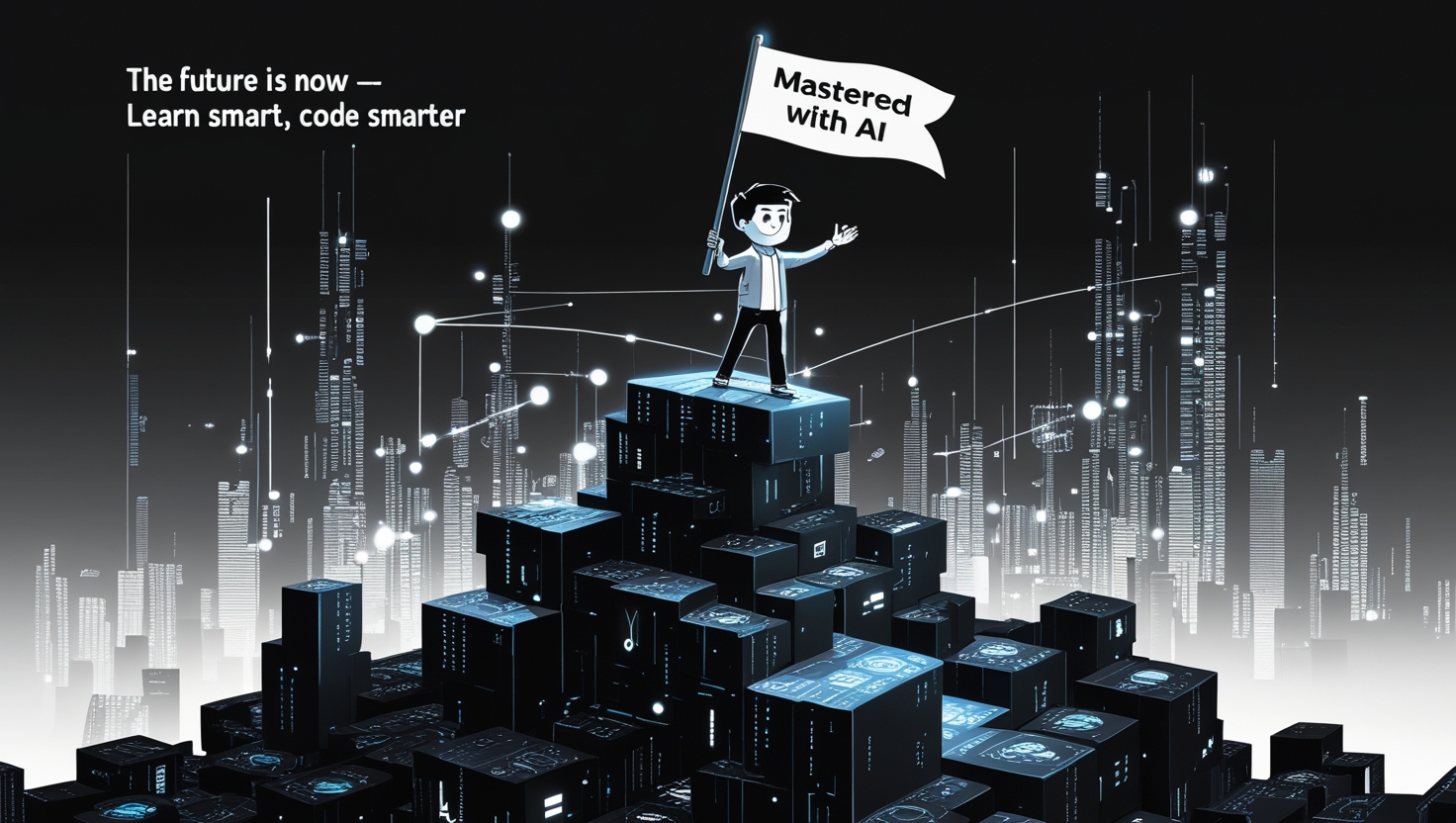Welcome to the ultimate guide on ai tools for learning coding. Whether you’re a beginner just starting out or an advanced coder looking to sharpen your skills, integrating artificial intelligence into your coding journey can radically change your learning process. In this article, we’ll explore five top AI assistants—including GitHub Copilot, Amazon CodeWhisperer, Replit AI, Tabnine, and Kite—that are proven to enhance your ability to learn programming faster and more efficiently.
Before we dive in, if you’re also interested in exploring other opportunities, don’t miss our detailed guide on free ai tools for earning, which can help you leverage AI in other exciting ways.

Introduction to AI Tools in Coding Education
The evolution of coding education has been remarkable, with AI playing a pivotal role in accelerating the process. Instead of slogging through endless tutorials and documentation, modern learners have access to interactive systems that provide real-time suggestions, analyze code patterns, and even generate complex code snippets at the click of a button. This innovative approach is not only making programming more accessible for teenagers and newcomers but also providing advanced practitioners with productivity hacks and deeper insights into code optimization.
Imagine coding while having a personal tutor who is available 24/7. That’s exactly what these cutting-edge tools offer: a mix of technology and human-like interactions that simplify learning highly technical subjects while keeping you engaged with immediate feedback and tailored suggestions.
Top AI Tools for Learning Coding
When it comes to ai tools for learning coding, each platform has its own unique features that cater to different learning styles and skill levels. In what follows, we’ll break down five of the most significant tools on the market. Our selection is based on performance, ease of integration, support for multiple languages, and the capacity to provide personalized learning experiences.
1. GitHub Copilot
GitHub Copilot is a powerful AI-powered coding assistant that leverages the extensive repository data available on GitHub. With its ability to autocomplete code, suggest code snippets, and even help write boilerplate code, it is one of the best ai tools for learning coding. Beginners will appreciate its straightforward code suggestions, while advanced users can harness its platform to streamline repetitive tasks.
Despite its many advantages, some developers have noted that Copilot’s suggestions occasionally require human oversight to ensure accuracy and optimized performance. To learn more about this tool, you can check out the official documentation on
GitHub Copilot Documentation.
2. Amazon CodeWhisperer
Amazon CodeWhisperer is another excellent companion in the realm of ai tools for learning coding. Designed with cloud-based applications in mind, this tool helps users by providing code recommendations and real-time debugging suggestions, especially for working with AWS services. Its intuitive design makes it a strong competitor to other AI tools, and its close integration with the broader Amazon ecosystem means it’s well-suited for learners who plan to develop cloud-native applications.
Although CodeWhisperer is a relatively new entrant in the market, early adopters appreciate its potential for accelerating learning and reducing the steepness of the learning curve involved in mastering cloud integrations.
3. Replit AI
For those who appreciate an online, collaborative environment, Replit AI offers a seamless platform to both code and learn. This tool not only provides AI-generated coding suggestions but also supports multiple programming languages and real-time collaboration functions. It’s one of the most user-friendly ai tools for learning coding due to its interactive interface that encourages community feedback and shared learning experiences.
While Replit AI shines in community-based learning scenarios, some educators suggest not relying entirely on AI suggestions, ensuring that the core fundamentals of programming are well understood before applying them.
4. Tabnine
Tabnine is known for its versatility and compatibility with multiple integrated development environments (IDEs). One of Tabnine’s biggest strengths is how it adapts to your coding style over time, providing highly personalized code completions. This characteristic makes it a vital tool for anyone serious about honing their programming skills.
When using Tabnine, programmers might sometimes find that its predictions are overly generic, thus underscoring its role as a complementary aid rather than a replacement for deeper coding understanding. The tool is particularly useful for those who value a tailored learning experience that evolves with their expertise.
5. Kite
Kite is an AI-powered coding assistant that supports over 16 languages, offering in-line code completions and documentation lookup functionality. It’s particularly popular among learners for its ability to speed up coding tasks and reduce the amount of time spent searching for documentation. Kite is hence another standout among ai tools for learning coding.
While Kite has proven useful in many scenarios, its performance can sometimes be impacted by larger codebases. Thus, while it remains a favorite for quick lookups and code accelerations, it is best used in tandem with traditional learning resources.
Comparative Overview of the AI Tools
To provide a clearer picture of what each tool offers at a glance, consider the table below which summarizes the main advantages and limitations of each platform:
| Tool | Key Advantages | Potential Drawbacks |
|---|---|---|
| GitHub Copilot | Seamless integration with GitHub; extensive code autocomplete; beginner-friendly | Requires human review for optimization; occasional generic suggestions |
| Amazon CodeWhisperer | Optimized for cloud-based coding; real-time debugging; strong AWS integration | Newer tool with fewer resources compared to legacy platforms |
| Replit AI | Interactive online platform; supports multiple languages; fosters community learning | Not ideal as a sole learning resource; dependency on community feedback |
| Tabnine | Adaptive personalized suggestions; works with various IDEs; improves with usage | Can offer overly generic predictions; best used as a supplementary tool |
| Kite | Wide language support; fast in-line completions; simplifies documentation lookups | May struggle with larger codebases; sometimes less context-aware |
How to Effectively Use AI Tools for Coding
Now that we’ve reviewed some of the leading ai tools for learning coding, you might be asking: “How can I use these resources without becoming overly dependent on them?” Well, the answer lies in striking the right balance between automated assistance and self-driven learning. Personally, I’ve found that using these tools as a supplemental resource greatly improves my coding efficiency without compromising my ability to really understand the underlying principles.
Begin utilizing AI suggestions as directives to walk your way through patterns and syntaxes of regular code. Once comfortable, challenge yourself to code without assistance from AI initially and depend on the AI later. That would get you acclimated with the solid roots of the paradigms of programming as well as problems-solving. Coupled with that, also try cross-verifying AI suggestions using accepted documents and study material—a routine of verifications leading to learning by means of proper methodologies and procedures.
It’s also necessary to set aside time specifically to read theory and documentation. It is better to apply tools such as GitHub Copilot and Kite to accelerate your coding exercise, instead of replace the diligent planning and debugging which good coding practice requires. In other words, these AI helpers are like training wheels that get you off to a good beginning, but afterwards must be removed as you cultivate your skills.
Integrating AI Tools into a Structured Learning Plan
Effective learning requires more than just using smart tools; it demands a structured approach that mixes theory, practice, and reflection. Consider crafting a weekly schedule where you allocate hours for:
experimenting with AI-generated code suggestions, working on projects independently, and reviewing programming fundamentals. By maintaining this balance, you ensure that the convenience of AI does not replace the essential problem-solving experiences.
For example, you might start your week by exploring a new coding concept with the help of Replit AI, then work on a project block where you implement that new idea. In between sessions, read articles, watch videos, or participate in coding communities to deepen your understanding. This method not only reinforces your learning but also encourages a mindset where AI is viewed as an assistant rather than a crutch.
Avoiding Overdependence on AI Suggestions
One of the common pitfalls while using ai tools for learning coding is becoming too reliant on their suggestions. It’s quite easy to accept an AI’s auto-completion without questioning its logic, but this can impede your growth as a coder. Always challenge yourself with direct questions like “Do I understand why this code works?” or “Could there be a more optimal solution without AI interference?”
Remember, AI can provide hints and shortcuts, but it is your critical thinking and creativity that truly define your coding capabilities. Using these smart assistants as a stepping stone rather than a final answer helps maintain a balance between efficiency and deep learning.

Real-World Success Stories and Expert Opinions
Many professional developers have shared their personal journeys of integrating AI tools into their learning regimen. A seasoned developer once mentioned, “Utilizing AI tools like GitHub Copilot gave me that initial confidence boost when I was overwhelmed by the complexities of coding. It served as a safety net that allowed me to experiment freely.” Such testimonials underscore the fact that if used wisely, these platforms can significantly reduce the time taken to master programming.
Experts caution, however, that there is no substitute for hands-on experience and genuine problem-solving practice. The sentiment is unanimous: use AI as a guide, not a crutch. Engage in community forums, contribute to open source, and always strive to understand the logic behind every code snippet.
Conclusion
In the high-speed, technology-saturated age we live in today, enhancing your coding skills by using AI tools to aid you is not only a nicety but also a smart strategy. Your journey from novice to master coder can be accelerated with the use of tools such as GitHub Copilot, Amazon CodeWhisperer, Replit AI, Tabnine, and Kite. Each one gives you unique suggestions and shortcuts that, when used cautiously, help you learn faster and write better code.
So, have you already tried one of these intelligent coding helpers? Take the challenge: can you enjoy both suggested fixes and building up your own thinking skills? Coding’s future is here, and it’s artificial intelligence. Embrace the new, experiment courageously, and remember that every line of code you write is a step toward mastery.
For more insights into how AI is reshaping various industries, check out our related article on
free ai tools for earning.
Can AI tools replace the need for thorough coding education?
No, AI tools are designed to enhance and complement your learning process—they are not a substitute for comprehensive coding education. It’s essential to build a solid understanding of programming fundamentals through continuous practice, study, and community engagement.
Which AI tool is best suited for advanced programmers?
For more experienced developers, tools like Tabnine and GitHub Copilot offer invaluable assistance in optimizing complex codebases, while Amazon CodeWhisperer is useful for integrating with cloud platforms. Advanced users often combine these tools with traditional debugging and testing approaches for best results.
How can I avoid becoming too dependent on AI tools when learning to code?
The key is to use AI as a supplemental resource rather than a primary guide. Always try to write code independently before consulting AI suggestions, and make sure to review official documentation and community forums. This balanced approach ensures you build strong foundational skills while benefiting from AI insights.
